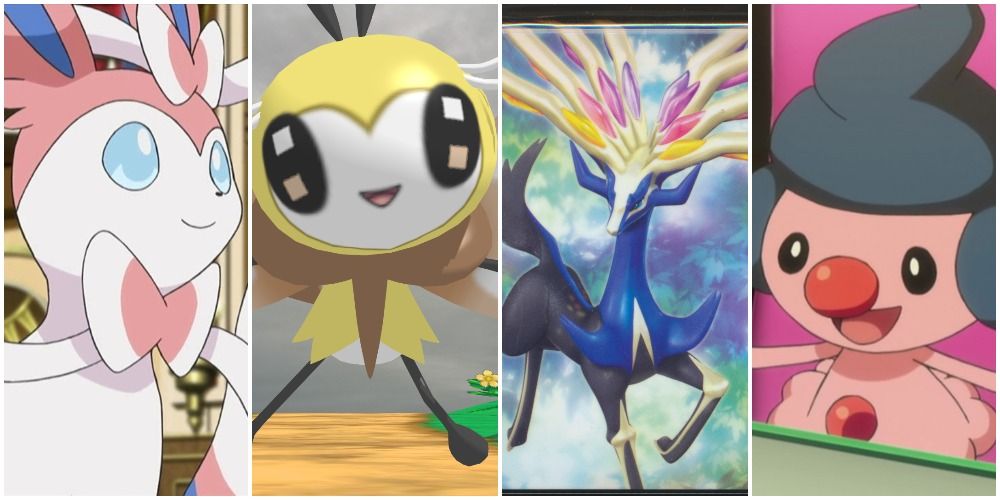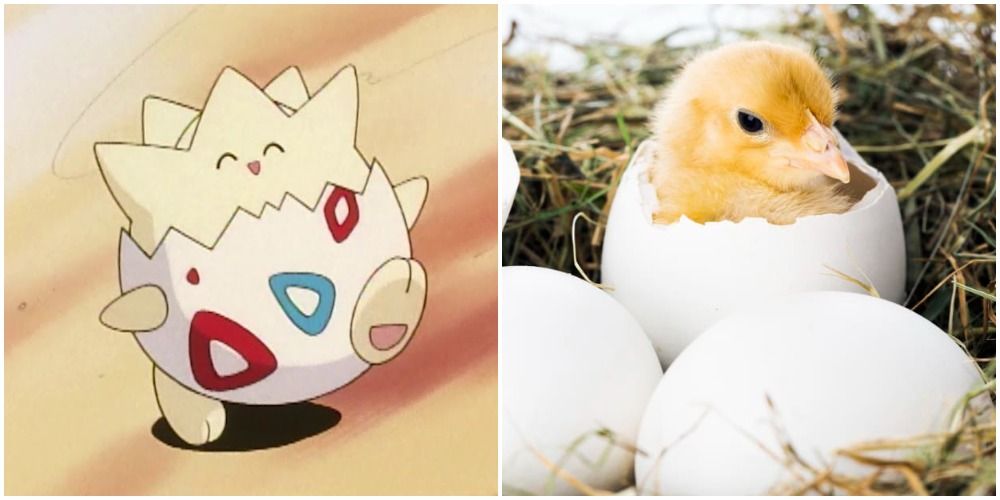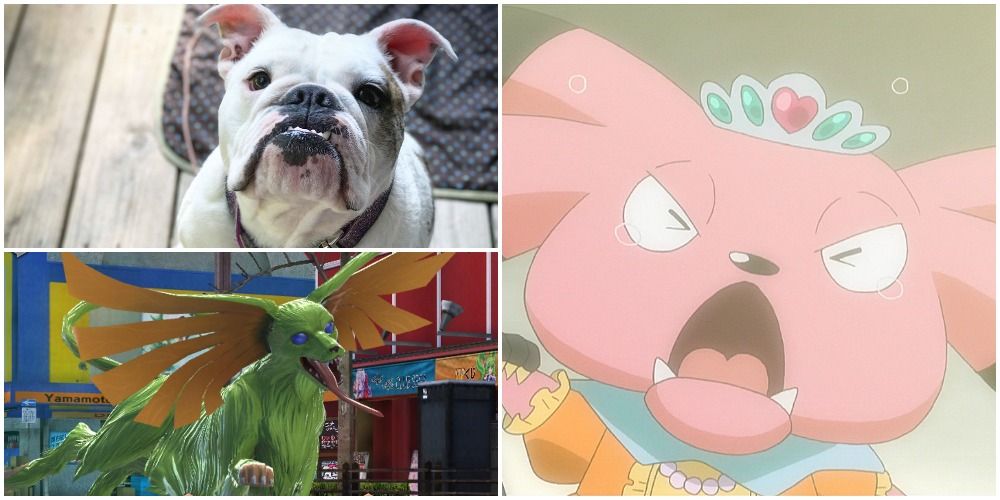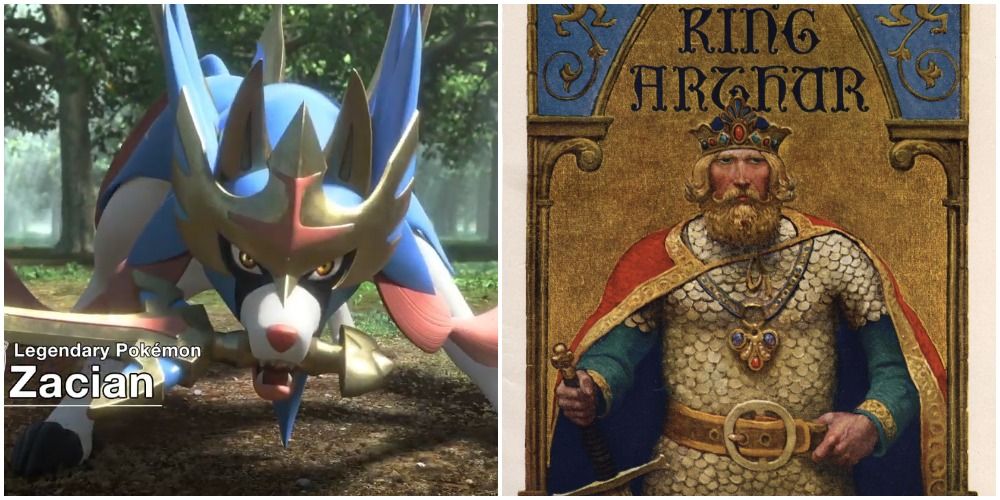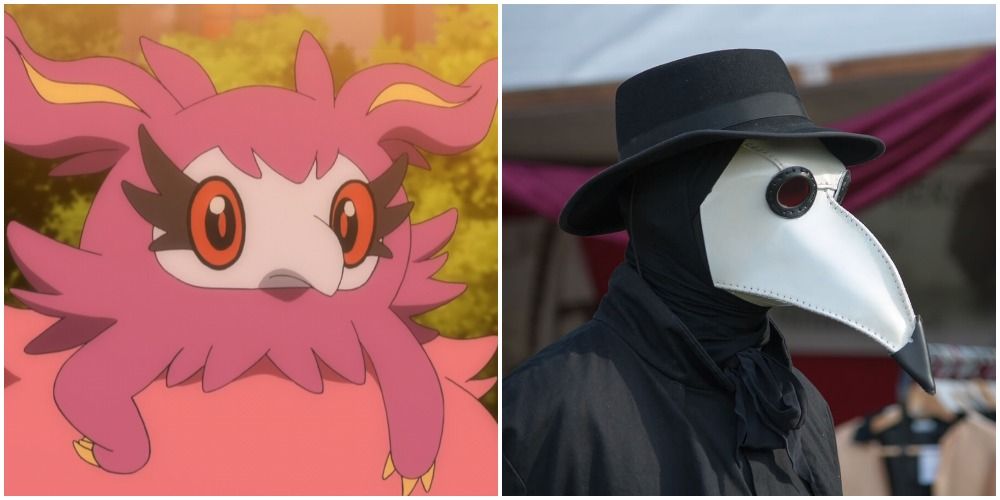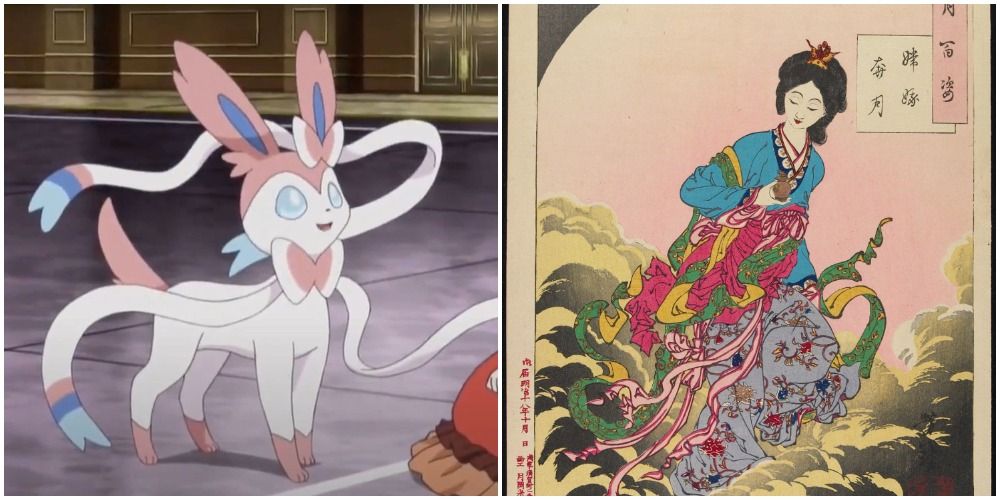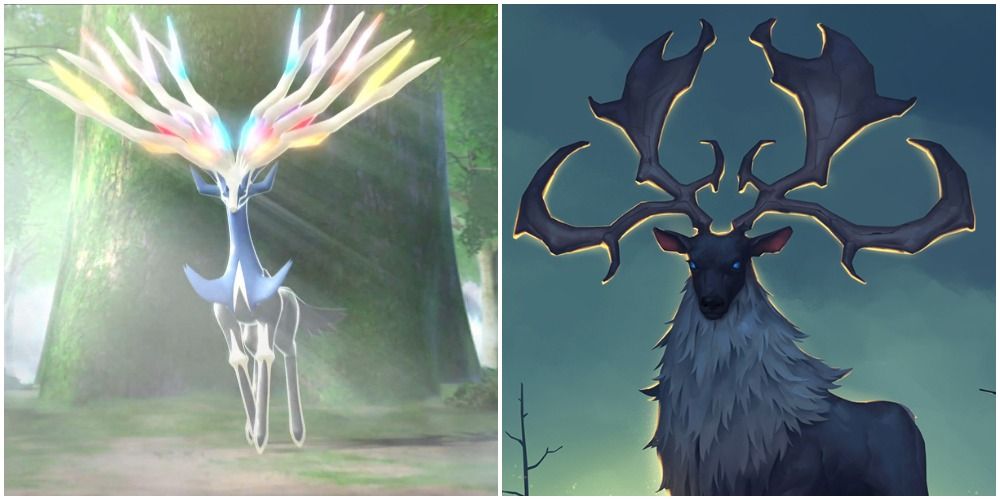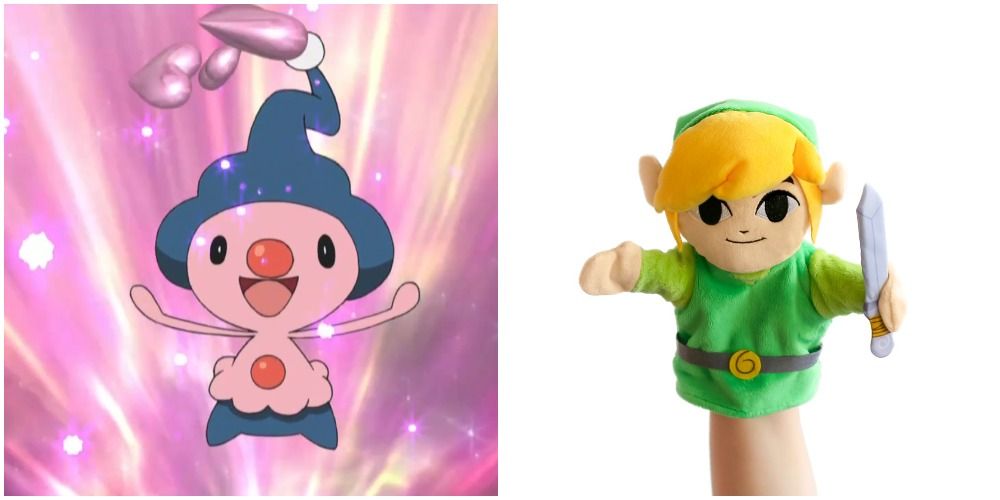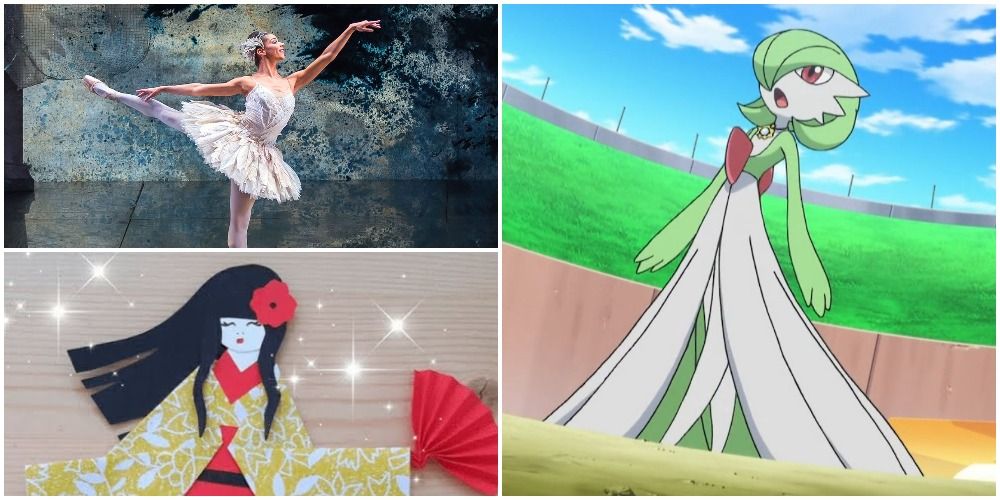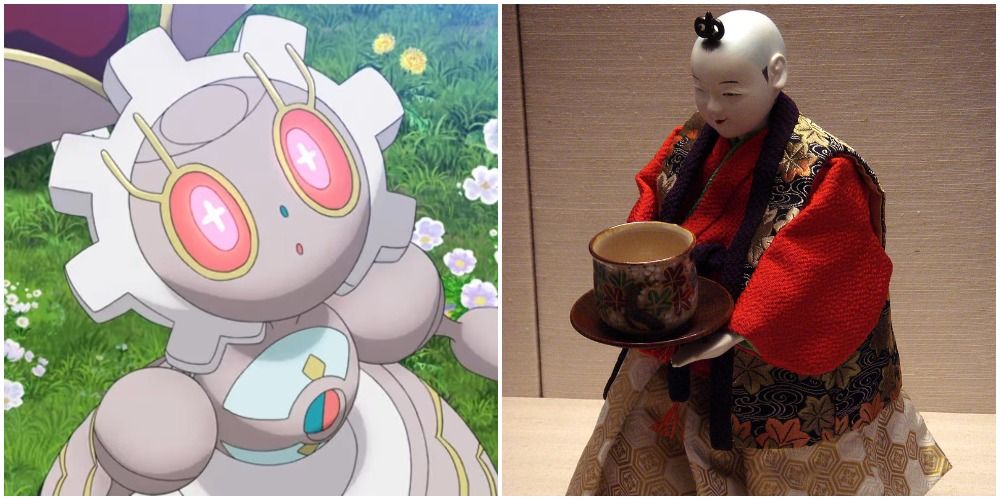Valentine's Day may be long gone like the last heart-shaped chocolate in the box or hot honey chicken wing in the bucket. But thankfully, the love of Pokemon will never go away.
The iconic and influential RPG franchise is celebrating its 25th anniversary this week, so there's no better time to share some of the series' most unique Pokemon designs and the equally intriguing inspirations behind them.
In remembrance of both Pokemon Day and Valentine's Day, let's show love for these 10 Fairy-Type Pokemon and their wonderfully lovely and mystifying origins.
10 Togepi - Bird Hatchlings and Korean Goblins?
The popular and super-cute Togepi is basically a hatchling partway out of its shell. But what kind of hatchling exactly? How about a bird? The "pi" of its name comes from Japanese onomatopoeia ("piyo") for "bird chirping". The bird-like beaks and wings of its evolutions, Togetic and Togekiss, certainly add credence to the theory, too.
Although not appearance-related, the word "Togepi" as a good luck charm references the dokkaebi, Korean mythological goblins that bring humans luck -- good or bad. Maybe there's an unlucky Togepi form somewhere...
9 Snubbull - English Bulldog and The Cu-sith
The grumpiest of grumpy dogs, Snubbull (like Togepi above) was Normal-type before Fairy-type was introduced in X & Y. Though it may seem like the wrong type, many players forget that Snubbull's original classification in Gen II was the "Fairy Pokemon."
That's because of its main inspiration: the Cu-sith, a beast of Celtic folklore whose name literally translates to "fairy dog." Also, like English bulldogs, Snubbulls try hard to look scary and intimidating. But just stick a bow or crown on them and your heart will melt.
8 Zacian - King Arthur & Excalibur
Zacian is heavily inspired by the epic British legend of King Arthur and his sacred sword, Excalibur. This no doubt contributes to its reputation as one of the best Legendary designs. Like its buddy Zamazenta, Zacian's appearance is based on a wolf. Wolves ran rampant in England during the Middle Ages (before being hunted to extinction) and were often used in crests of noble families.
The two legendary wolves also call to mind the irresistible force paradox: unstoppable force versus immovable object. If Zacian's sword can slice through anything but Zamazenta's shield can deflect any attack...who the heck would win?!?
7 Aromatisse - Powder Puffs and Plague Doctors
Aromatisse's beak-like face resembles the birdlike masks of plague doctors who treated victims of the bubonic plague centuries ago. The beak was filled with aromatics to "perfume" the scent of the dead and diseased; it was also thought to block miasma or "putrid air". This is what people thought, at the time, was the cause of infection. Spoiler alert: it wasn't.
But Aromatisse's design also plays on cosmetics applicators such as powder puffs or poufs. It also evokes can-can dancers with feathered dresses and exposed legs. Ooh la la!
6 Sylveon - Chang'e the Moon Goddess and Forest Nymphs
In contrast to Umbreon who takes inspiration from the Moon rabbit of Chinese folklore, the Fairy-type Eeevolution Sylveon is an ethereal take on the Moon Goddess herself. Chang'e is often depicted in a gown with long, flowing, and floating ribbons much like her Pokemon equivalent.
Etymologically speaking, Sylveon's name references "sylph", a mythical spirit of the air, and "sylvan", an adjective relating to woodlands and forests, much like nymphs. That seems like a great fit for Chang'e and her ephemeral aesthetic.
5 Xerneas - Eucladoceros and Eikthyrnir
The legendary cover star of Pokemon X was inspired by the extinct Eucladoceros of the Pleistocene period between 11,000 and 2.5 million years ago. Both share spectacularly large, multi-pronged antlers. Xerneas' glowing horns also reference Eikthyrnir of Norse myth, a stag in Valhalla that feeds on foliage of Yggdrasil, the World Tree. Yes, fans of Xenoblade Chronicles 2, Dragon Quest XI, God of War, and even Xenogears -- THAT World Tree.
Xerneas' name combines "cervid" (any mammal of the deer family), "Ceryneian hind" (a mythological Greek deer with golden antlers broken by Heracles), and "Cernunnos", a life-giving horned deity of Celtic folklore. Valheim players might also recognize the name, too.
4 Mime Jr. - Hand Puppets & Possessed Toys
Much like its evolutions, Mime Jr. is based on a mime artist but with additional nods to clowns. The clown bits are mainly a big red nose and jester's cap. Its childlike appearance and demeanor along with its diminutive size bring to mind kids' toys or hand puppets.
The toy/puppet design relates back to Japanese folklore -- specifically the tsukumogami, a group of inanimate objects and tools possessed by spirits. Though the thought could potentially turn spooky, Mime Jr. seems innocent enough, right?
3 Gardevoir - Ballet Dancers and Paper Dolls
With its flowy white dress and tiptoes en pointe, the Psychic/Fairy Gardevoir is clearly the ballerina of the Pokemon world. Its Mega Evolution doubles down with a ballroom dancer design featuring a large, ballooning dress, ultra-fancy evening gloves, and what seems to be an Empire waist style.
Gardevoir's long, thin, and frail body appears to be based on Japanese paper dolls known as anesama ningyo. But of course, that perceived frailty is all a show as Gardevoir ranks amongst the strongest Fairy-types in the series.
2 Ribombee - Bee Fly
Ribombee, the rare and unique Bug/Fairy Pokemon, has a fairly distinct and uncanny inspiration within the animal kingdom - the bee fly, aka Bombyliidae. Unlike regular flies, bee flies are pollinators and feed on nectar like their half-brethren.
Evolutionary biologists theorize that the bee fly's resemblance to a bee is due to Batesian mimicry, a process where a harmless creature evolves to imitate the predators of its predator in appearance and sound. Does that mean that Beedrill eats Cutiefly Pokemon?
1 Magearna - Karakuri Puppets and Maids
Magearna, the Fairy/Steel Mythical Pokemon, is inspired by the earliest known robots in human history. Karakuri are Japanese mechanized puppets and automata that date back to the 17th century. They're composed of gears and camshafts used in clock-making having been built mainly for gesture-based entertainment.
Magearna's design also strongly resembles a maid's outfit with its circular, gear-shaped headdress, frilly apron, rounded shoulder pads, and puffed sleeves.

